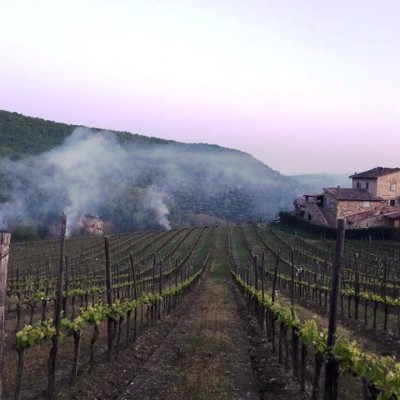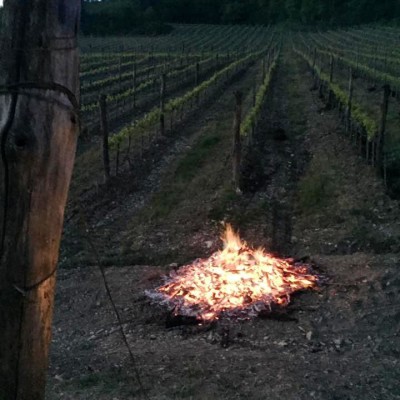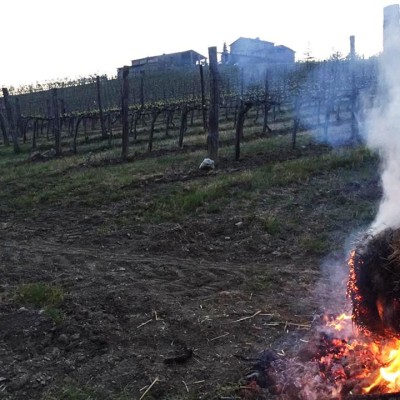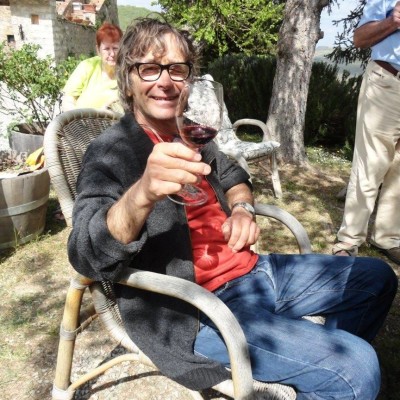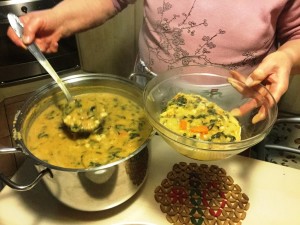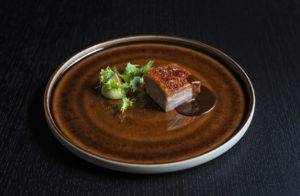Articolo disponibile anche in: Italian
The world of Chianti Classico is very worried about the effects that the April frosts which have hit vast portions of the area might bring.
The weather has caused some producers, like Paolo Cianferoni (Caparsa, Radda in Chianti) to light up night fires in the vineyards. Paolo burned 10 square meters of wood and 13 bunches of straw.
“It costs a lot. I hired two workers to follow operations. Also, in our agricultural world, straw is not easy to find. It costs as much as gold. The balls of straw aren’t manageable. We need pressed straw. I finally was able to find it. Straw gives the best results. It gives off smoke and combats the frost which less easily covers the leaves”.
“How did it go? Let’s say that we are still observing,” he answers. “The damage occurs based on a group of factors: humidity, exposition, winds, budding. I tried to diminish the risk. It’s more or less the same as with treatments. I hope and think I was successful”.
We asked Dario Parenti, experienced both in enology and in the “field” about the effects of the frost which arrived just when germination and gemmation had begun in the vineyards.
What are the risks relative to the unexpected frost of these days?
“The vine sprouts die at 0 degrees centigrade, especially if there are concurrent conditions of elevated humidity. There is a greater risk if the vines are young. Many have already incurred some damage”.
What does the weather forecast say? Are we out of danger?
“It depends on the zone. In the lower and hotter areas, perhaps yes, but we have to see what the minimum temperatures will be. The greater problems and risks are in the higher areas, like Radda and Gaiole. It seems that the temperature will be higher starting with Saturday”.
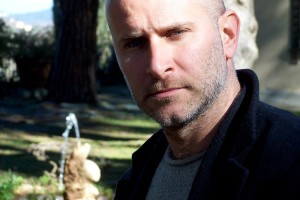
Dario Parenti
How can we protect the vineyards, other than with night fires?
“I was recently in Umbria, a zone historically more exposed than us to Siberian winds. I heard about an anti-freeze that can be used in the vineyard, but I honestly don’t know exactly what it entails. The most classic systems are those based upon the creation of night ‘fires’, especially duing the coldest hours, both to try and raise the temperature as well as to avoid the creation of humidity which facilitates drying when in combination with temperatures lower than zero”.
Are there territories or zones which are more at risk?
“The altitude obviouly lowers the temperatures, but even the most humid zones like the ones at the bottom of the valley are at extreme risk”.
According to you, will there be heavy damage or will it “only” be a large scare?
“There has already been some damage, more or less, depending on the zone. Fortunately, there isn’t excessive humidity. The hope is to limit the damage, with fires where necessary. And we hope that the weather will be forgiving. In any case, all of the vines have a latent bud, the so-called “bourillon”, which awakes in emergency conditions. It is very useful in Sangiovese, and when things go bad, it will become useful for production”.
Matteo Pucci
